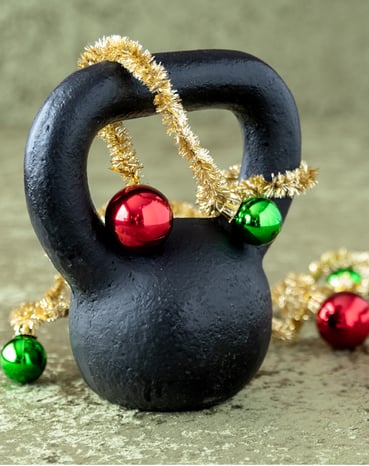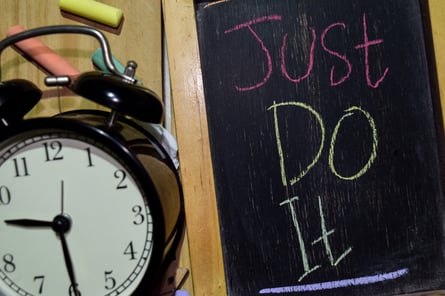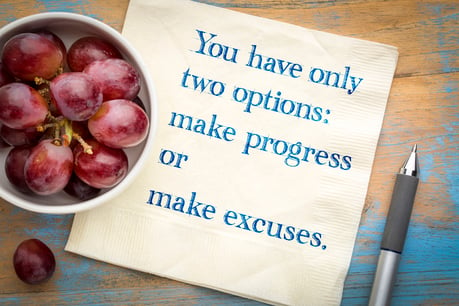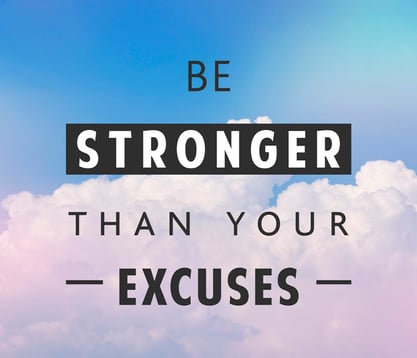 I don’t know about you, but often during the holidays it just seems easy to blow off your daily workout. You have done well up to this point, staying committed and getting yourself into the gym or out for a run. But with the dark evenings, busy work schedule, and possibly some travel, it tends to be the first thing to take off the list. It’s important for your body to take a break, but if you need some tips on how to keep yourself going, keep reading!
I don’t know about you, but often during the holidays it just seems easy to blow off your daily workout. You have done well up to this point, staying committed and getting yourself into the gym or out for a run. But with the dark evenings, busy work schedule, and possibly some travel, it tends to be the first thing to take off the list. It’s important for your body to take a break, but if you need some tips on how to keep yourself going, keep reading!
Here are some tips I have come up with to beat the holiday workout blues:
- Keep it on the schedule. One of the best ways to make sure that you are getting your workout in is to keep it on your schedule. If you have it set in place, it’s not as easy to skip it and head home for some Monday Night Football instead!
- Meet your workout buddy. If you don’t have one, now is a great time to find one. Find someone that you can be accountable to and make sure you’re getting yourself to the gym.
- Try a home workout. It’s okay to stay in if you can’t seem to get yourself to the gym; there are plenty of things you can do at home to keep yourself fit. Some ideas are pushups, lunges, squats, planks, and going for a run.
- Get up early to get it done. If you get your workout done in the morning, you won’t have to think about it the rest of the day! Then once you get out of work and it’s dark, you can just go home and relax.
- Try something new. This is a great time to try a class or something that you haven’t done before. Try new group fitness class or meet with a health fitness instructor to get a fresh and new personal workout plan.
- Keep yourself accountable. Check it off in your calendar, put your plan on the fridge, or track your workout in the NIFS app to keep yourself focused on what you need to be doing and create your own accountability.
Whatever it may be for you, find that one thing that keeps you clicking along. You will have to indulge at some point over the next month and half in something that you may have not normally ingested, and if you keep up the workouts, it’s okay! It’s all about discipline during these holiday months, but do your best to keep yourself on track in your exercise to limit the workout blues!
*****
 If your looking for a new challenge in the new year consider registering for the NIFS Mini-Marathon & 5k Training Program that starts in February. We can help you train for any race you want to accomplish in the spring! Click below to fine out more information!
If your looking for a new challenge in the new year consider registering for the NIFS Mini-Marathon & 5k Training Program that starts in February. We can help you train for any race you want to accomplish in the spring! Click below to fine out more information!
This blog was written by Amanda Bireline, Health Fitness Specialist. To find out more about the NIFS bloggers, click here.


 There’s always an assumption that fitness professionals work out 2 hours a day, 7 days a week. They eat healthy all day long and never have any junk food. Basically people think that we are perfect and never make mistakes. I have been in the health and fitness industry for more than 10 years now and I can honestly say that couldn’t be further from the truth.
There’s always an assumption that fitness professionals work out 2 hours a day, 7 days a week. They eat healthy all day long and never have any junk food. Basically people think that we are perfect and never make mistakes. I have been in the health and fitness industry for more than 10 years now and I can honestly say that couldn’t be further from the truth.
 Picture this: You’re sitting in the car, in stop-and-go traffic. Your mood is just shot and all you want to do is get home. Now try this: Turn up the volume on your radio and let the music take over your soul!
Picture this: You’re sitting in the car, in stop-and-go traffic. Your mood is just shot and all you want to do is get home. Now try this: Turn up the volume on your radio and let the music take over your soul!  When you hear about fitness and wellness, one of the first things that comes to mind is getting a workout, usually at a gym, fitness center, or club. Some people can get exercise in other ways, such as outdoor activities and sports, while many others receive plenty of fitness at the workplace (think lumberjacks, steel workers, and factory workers). If none of these sounds like you or if you and you feel as though the fitness route is a tough road to travel, there is hope. There are things you do in your everyday life that give you an opportunity to burn calories.
When you hear about fitness and wellness, one of the first things that comes to mind is getting a workout, usually at a gym, fitness center, or club. Some people can get exercise in other ways, such as outdoor activities and sports, while many others receive plenty of fitness at the workplace (think lumberjacks, steel workers, and factory workers). If none of these sounds like you or if you and you feel as though the fitness route is a tough road to travel, there is hope. There are things you do in your everyday life that give you an opportunity to burn calories. As fitness professionals, we promote good habits to our clients and encourage people to make positive changes in their lives. Sometimes we help others find the spark to exercise or offer the accountability to make those hard-earned results stick. Overall, “helping individuals achieve success in goals and happiness in life” sums up what it means to be a trainer.
As fitness professionals, we promote good habits to our clients and encourage people to make positive changes in their lives. Sometimes we help others find the spark to exercise or offer the accountability to make those hard-earned results stick. Overall, “helping individuals achieve success in goals and happiness in life” sums up what it means to be a trainer. There is no debate that it’s easier to make healthier choices and lose weight in the spring and summer months. The sun is shining and warm, the days are longer, and you feel motivated to get outdoors and be active. But when the cold, harsh months of winter come around, all motivation goes out the window. Let’s take a look at ways to keep your motivation high and get over those hurdles of temptation.
There is no debate that it’s easier to make healthier choices and lose weight in the spring and summer months. The sun is shining and warm, the days are longer, and you feel motivated to get outdoors and be active. But when the cold, harsh months of winter come around, all motivation goes out the window. Let’s take a look at ways to keep your motivation high and get over those hurdles of temptation. We’ve all been there, right? You’ve chosen a new habit that you want to form: go to the gym four times a week, choose one day a week to grocery shop and meal prep, maybe start work on that side hustle you’ve been meaning to do for years. You’re all in, gung-ho for about five days, and before you know it, you’ve fallen back into the same routine as before. That bright flame that once was your motivation has faded into the background. Now what?
We’ve all been there, right? You’ve chosen a new habit that you want to form: go to the gym four times a week, choose one day a week to grocery shop and meal prep, maybe start work on that side hustle you’ve been meaning to do for years. You’re all in, gung-ho for about five days, and before you know it, you’ve fallen back into the same routine as before. That bright flame that once was your motivation has faded into the background. Now what? Picture yourself on the shore of a lake or a pond, and you cast a stone into the water. You see it enter the water and disappear, leaving behind a bounty of ripples that seemingly spread out for miles. The act of tossing a small stone into the water will result in a change that can be felt much farther away than the initial entry point—proof that small actions can lead to much bigger changes, even if you can’t see how far they can reach.
Picture yourself on the shore of a lake or a pond, and you cast a stone into the water. You see it enter the water and disappear, leaving behind a bounty of ripples that seemingly spread out for miles. The act of tossing a small stone into the water will result in a change that can be felt much farther away than the initial entry point—proof that small actions can lead to much bigger changes, even if you can’t see how far they can reach. After the New Year, springtime is another time that motivates us to make a fresh start. When the weather finally starts to warm up and the breeze is blowing, we want to throw open the windows and let the rebirth all around us revitalize our homes and our spirits.
After the New Year, springtime is another time that motivates us to make a fresh start. When the weather finally starts to warm up and the breeze is blowing, we want to throw open the windows and let the rebirth all around us revitalize our homes and our spirits. What’s your motivation for working out? Eat healthy? What’s your motivation to get enough sleep or practice de-stressing with yoga or foam rolling? What’s your motive to get your friends and family to go on a walk or to the gym with you?
What’s your motivation for working out? Eat healthy? What’s your motivation to get enough sleep or practice de-stressing with yoga or foam rolling? What’s your motive to get your friends and family to go on a walk or to the gym with you?